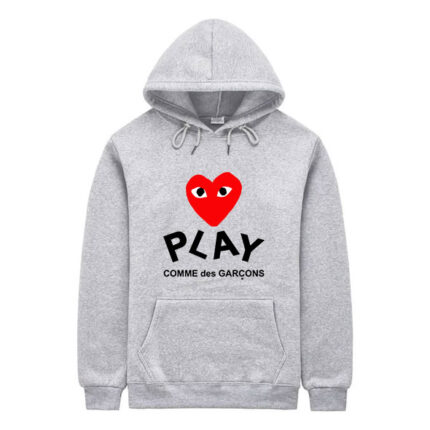Comme des Garçons (CDG), founded by Rei Kawakubo in 1969, has long been recognized as a pioneering force in the fashion industry. With its avant-garde designs and commitment to challenging conventional norms, the brand has set itself apart. However, as a global player Comme Des Garcons in fashion, CDG faces the pressing challenge of addressing cultural and social issues, including cultural appropriation, diversity, and inclusivity. Navigating these complexities is crucial for maintaining the brand’s reputation and relevance in an increasingly conscious consumer landscape.
1. Cultural Appropriation vs. Cultural Appreciation
Cultural appropriation, the act of taking or using elements from a culture without understanding or respecting its significance, has become a contentious issue in fashion. Comme des Garçons, known for its boundary-pushing aesthetics, has occasionally faced criticism for designs that draw inspiration from diverse cultures.
To address these concerns, CDG must navigate the fine line between cultural appreciation and appropriation. This involves understanding the origins and meanings behind cultural elements used in designs, ensuring that they are represented respectfully and accurately. The brand can collaborate with cultural experts and designers from diverse backgrounds to create collections that honor and celebrate cultural heritage rather than exploit it. By actively engaging in dialogue with communities and emphasizing ethical storytelling, CDG can foster a deeper connection with cultural narratives.
2. Promoting Diversity in Representation
The fashion industry has been historically criticized for its lack of diversity and representation, particularly regarding race, gender, and body types. As a leading brand, Comme des Garçons has a responsibility to promote inclusivity within its campaigns, runway shows, and product offerings.
To effectively address these issues, CDG can focus on showcasing diverse models and talent that reflect a range of backgrounds and identities. This commitment to representation not only enhances the brand’s image but also resonates with a broader audience seeking authenticity and inclusivity in the brands they support. Additionally, the brand can explore collaborations with emerging designers and artists from underrepresented communities, amplifying their voices and promoting diversity within the fashion landscape.
3. Environmental and Social Responsibility
The intersection of environmental sustainability and social responsibility is another critical area where Comme des Garçons must demonstrate leadership. As consumers become increasingly aware of the fashion industry’s environmental impact, brands are under pressure to adopt sustainable practices that prioritize both ecological health and fair labor conditions.
CDG has made strides in sustainability, emphasizing quality, craftsmanship, and ethical production methods. However, the brand must continue to evaluate its practices to ensure that they align with its commitment to social responsibility. This includes transparency in the supply chain, ensuring fair wages and working conditions for garment workers, and actively participating in initiatives that promote ethical practices within the industry.
By adopting a holistic approach to sustainability that encompasses both environmental and social considerations, CDG can position itself as a leader in responsible fashion, inspiring other brands to follow suit.
4. Engaging in Community and Advocacy
Comme des Garçons can further address cultural and social issues by actively engaging with communities and supporting advocacy initiatives. This engagement can take various forms, including collaborations with local artisans, sponsorship of cultural events, and support for organizations that promote social justice.
By establishing partnerships with community organizations and grassroots movements, CDG can contribute to positive social change and demonstrate a genuine commitment to the causes it supports. This involvement not only strengthens the brand’s relationship with its audience but also aligns its identity with values that resonate deeply with consumers who prioritize ethical considerations in their purchasing decisions.
5. Navigating Global Sensitivities
As a global brand, Comme des Garçons must be sensitive to cultural nuances and social issues that vary across regions. What may be acceptable in one culture could be offensive in another, making it essential for the brand to conduct thorough research and engage in meaningful dialogue with diverse communities.
This challenge underscores the importance of cultural competence and awareness in fashion design and marketing. CDG can benefit from employing a diverse team that brings varied perspectives, ensuring that the brand’s creative direction is informed by a rich tapestry of cultural insights. By fostering an inclusive environment within the organization, CDG can better navigate global sensitivities and create collections that resonate positively across different cultures.
Conclusion
Comme des Garçons stands at a critical juncture, facing the Comme Des Garcons Hoodie imperative to address cultural and social issues within the fashion industry. By navigating the complexities of cultural appropriation, promoting diversity, embracing environmental and social responsibility, engaging with communities, and understanding global sensitivities, the brand can reinforce its commitment to ethical fashion.
Rei Kawakubo’s vision of challenging conventions can be extended to include a deeper understanding of the cultural and social implications of fashion. By actively engaging with these issues, Comme des Garçons can not only enhance its reputation but also inspire a new generation of designers and consumers to prioritize inclusivity, respect, and responsibility in the world of fashion.
